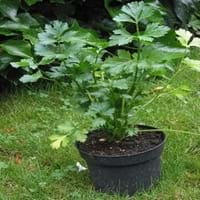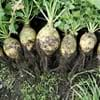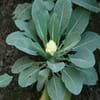Life Span
Annual or Biennial
Perennial
Origin
Europe, Northern Africa, Asia
Australia
Types
Not Available
Not Available
Habitat
Coastal Regions, Marshy ground, Wet ground
Scrubs, tussock grasslands, Upland savannas
USDA Hardiness Zone
Not Available
10-11
Sunset Zone
Not Available
8, 9, 12, 13, 14, 15, 16, 17, 18, 19, 20, 21, 22, 23, 24
Habit
Upright/Erect
Upright/Erect
Flower Color
White
Lemon yellow
Flower Color Modifier
Bicolor
Bicolor
Fruit Color
Tan, Brown
Gray Green
Leaf Color in Spring
Light Green
Blue Green
Leaf Color in Summer
Green, Light Green
Blue Green
Leaf Color in Fall
Green, Light Green
Blue Green
Leaf Color in Winter
Not Available
Blue Green
Leaf Shape
Irregular
Long Narrow
Plant Season
Spring, Summer
Spring
Sunlight
Full Sun
Full Sun
Type of Soil
Loam
Loam, Sand
The pH of Soil
Neutral, Alkaline
Acidic, Neutral, Alkaline
Soil Drainage
Well drained
Well drained
Bloom Time
Late Spring
Spring, Late Winter
Tolerances
Drought
Drought
Where to Plant?
Container, Ground
Ground
How to Plant?
Seedlings, Transplanting
Seedlings
Plant Maintenance
Low
Medium
Watering Requirements
Keep ground moist, Requires regular watering
Do not water excessively
In Summer
Lots of watering
Lots of watering
In Spring
Moderate
Moderate
In Winter
Average Water
Average Water
Soil pH
Neutral, Alkaline
Acidic, Neutral, Alkaline
Soil Type
Loam
Loam, Sand
Soil Drainage Capacity
Well drained
Well drained
Sun Exposure
Full Sun
Full Sun
Pruning
Remove damaged leaves, Remove shoots
Remove dead or diseased plant parts, Requires little pruning
Fertilizers
Less fertilizing
All-Purpose Liquid Fertilizer, No fertilizers needed
Pests and Diseases
Bacteria, Downy mildew, Fungal Diseases, fungus, Mosaic viruses, Pink Root, Red blotch
Insects, Root rot
Plant Tolerance
Frost
Drought
Flower Petal Number
Single
Single
Fragrant Bark/Stem
Yes
No
Foliage Texture
Coarse
Fine
Foliage Sheen
Glossy
Matte
Attracts
Insects, Mice, Rodents, Spider Mites
Butterflies
Allergy
Irritation to stomach
Asthma, Eye irritation, Headache, Nose Irritation, Throat itching, Vomiting
Aesthetic Uses
Not Available
Showy Purposes
Beauty Benefits
Good for skin, Improve skin condition, Moisturizing, Skin Problems
Not Available
Environmental Uses
Air purification, Food for animals, Food for birds, Food for insects
Air purification, soil stabilisation
Medicinal Uses
Cancer, Combats Stress, Eye Problems, High blood pressure, High cholestrol, Indigestion, Inflammation, Weight loss
Not Available
Part of Plant Used
Leaves, Seeds
Flowers, Sap, Seeds
Other Uses
Employed in herbal medicine, Oil is used in perfume, soaps, creams, etc., Used As Food, Used for its medicinal properties, Used as a spice
Used as a dye, Wood is used fore making tools
Used As Indoor Plant
Yes
No
Used As Outdoor Plant
Yes
Yes
Garden Design
Container, Edible, Herb / Vegetable
Shade Trees, Street Trees
Botanical Name
APIUM graveolens
ACACIA aneura
Common Name
Celery
Mulga, True Mulga
Phylum
Tracheophyta
Magnoliophyta
Class
Magnoliopsida
Magnoliopsida
Clade
Angiosperms, Asterids, Eudicots
Angiosperms, Eudicots, Rosids
Tribe
Apieae
Not Available
Subfamily
Apioideae
Not Available
Number of Species
Not Available
Not Available
Season and Care of Celery and Mulga Tree
Season and care of Celery and Mulga Tree is important to know. While considering everything about Celery and Mulga Tree Care, growing season is an essential factor. Celery season is Spring and Summer and Mulga Tree season is Spring and Summer. The type of soil for Celery is Loam and for Mulga Tree is Loam, Sand while the PH of soil for Celery is Neutral, Alkaline and for Mulga Tree is Acidic, Neutral, Alkaline.
Celery and Mulga Tree Physical Information
Celery and Mulga Tree physical information is very important for comparison. Celery height is 45.70 cm and width 30.50 cm whereas Mulga Tree height is 550.00 cm and width 370.00 cm. The color specification of Celery and Mulga Tree are as follows:
Celery flower color: White
Celery leaf color: Light Green
Mulga Tree flower color: Lemon yellow
- Mulga Tree leaf color: Blue Green
Care of Celery and Mulga Tree
Care of Celery and Mulga Tree include pruning, fertilizers, watering etc. Celery pruning is done Remove damaged leaves and Remove shoots and Mulga Tree pruning is done Remove dead or diseased plant parts and Requires little pruning. In summer Celery needs Lots of watering and in winter, it needs Average Water. Whereas, in summer Mulga Tree needs Lots of watering and in winter, it needs Average Water.





